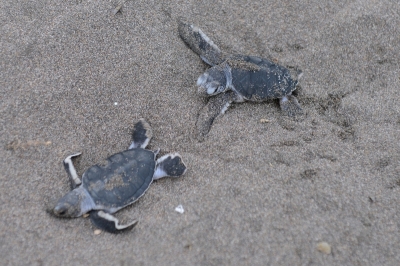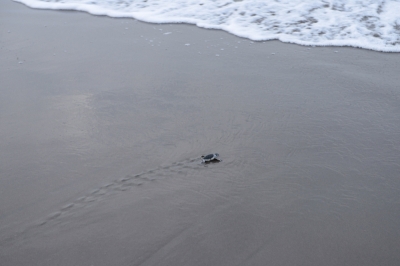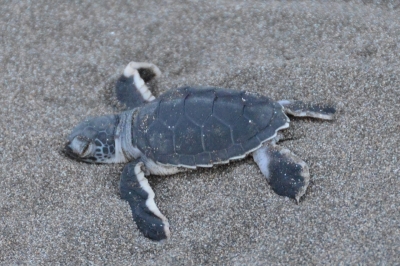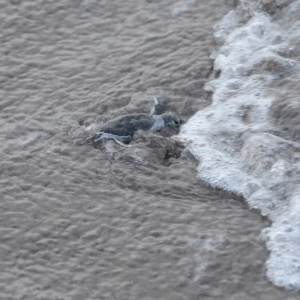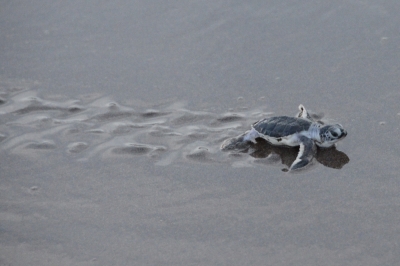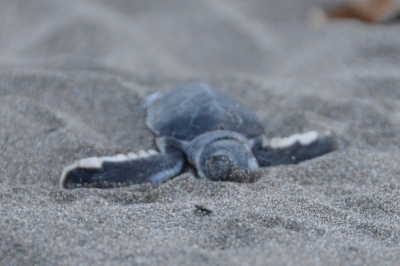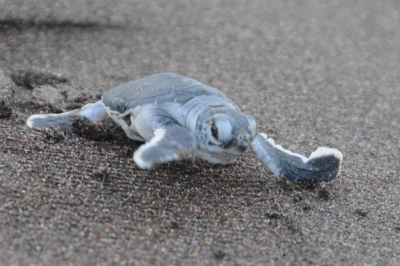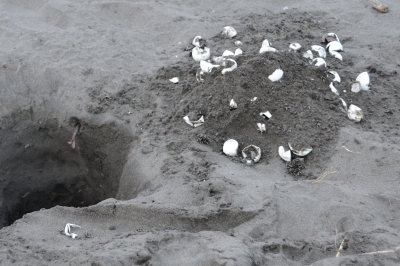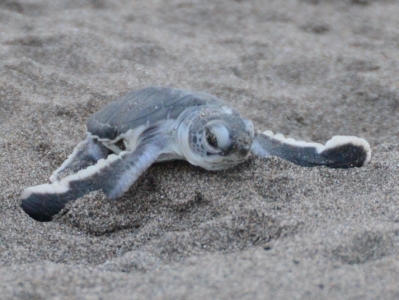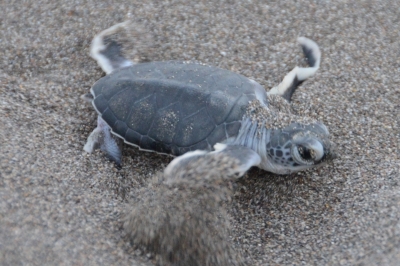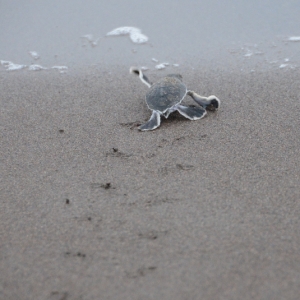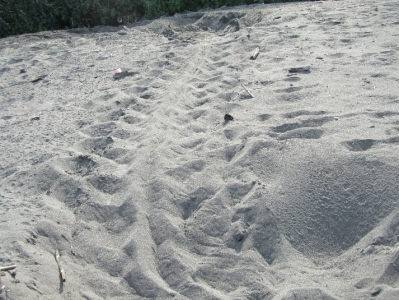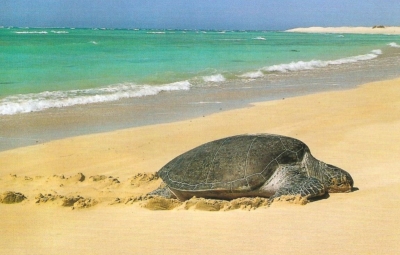After mating at sea, the female sea turtle return to the beach where they were hatched to nest. The female turtle hauls herself onto the beach, nearly always at night, and finds suitable sand on which to create a nest. Using her hind flippers. She digs a hole 18 inches deep. After the hole is dug, the female deposits around 50 eggs. She refills the nest with sand, smoothing the surface until it is undetectable. The whole process takes 30 to 60 minutes. She then returns to the ocean leaving the hatchlings to mature. Approximately 60 days later hatchlings break free from the sand and by instinct head toward the light usually the ocean. The season for green turtles is mid July to mid October.
The turtle spotters do not let visitors on the beach for the egg laying process, but once it is finished we were welcome to come along on the turtles return trip to the sea. I was shocked by how fast an animal that large could move. Our turtle, was a good 3 feet long and 250 pounds. They do not allow photographs so we snitched one from the internet. David and I were lucky. The eggs deposited in August became hatchlings in October. One little fella ran to the light and ended up in our restaurant. Perhaps he wanted some ice cream for his birth day. Luckily he was not turtle soup, the owners picked him up and set him right back on the beach and off he ran to the water. When we walked the beach we would see tracks of mommas and hundreds of babies, even one that seemed to say ADIOS, before he went into the sea (as all good Spanish turtles would!)

